Results
The BCI-Ageing project proposed BCI tools for promoting active ageing. More specifically, we developed two BCI-based applications:
BCI tool for cognitive training
A BCI tool for cognitive training was developed by means of a motor imagery (MI)-based BCI. The proposed tool allows users to perform neurofeedback training (NFT) and working memory cognitive training (WMCT) tasks. More specifically, five different NFT tasks and one CT task were implemented.

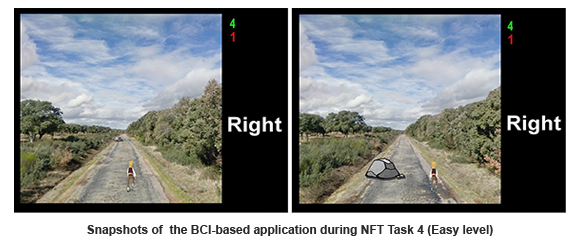
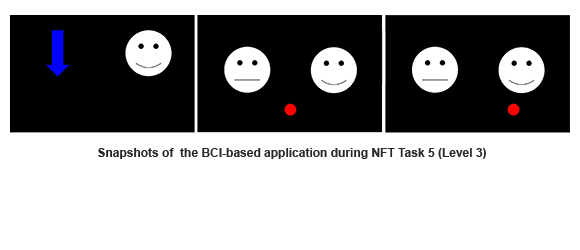
Assessment of the NFT-BCI tool
Sixty three people, recruited by the National Reference Centre on Disability and Dependence (CRE-DyD) from San Andrés del Rabanedo (León, Spain), participated in the assessment of the NFT-BCI tool. All participants were older than 60 years, healthy and without any neuropsychological disorder. Thirty one (13 male, 18 female, mean age = 62.3, range = 63-81) received neurofeedback training (experimental group), while the remaining thirty two (9 male, 23 female, mean age = 68.0, range = 61-80) did not (control group).
Subjects from both groups (experimental and control groups) performed the Luria Adult Neuropsychological Diagnosis (AND) test. The Luria test includes nine sub-tests distributed in five different areas: visuospatial (visual perception and spatial orientation), oral language (receptive speech and expressive speech), memory (immediate memory and logical memory), intelligence (thematic draws and conceptual activity) and attention (attentional control). Participants from the experimental group performed 10 cognitive training sessions with the proposed BCI-based application: 5 NFT sessions alternated with 5 WMCT sessions. After performing cognitive training sessions, we found significant differences between both groups (experimental vs. control) for several functions: visual perception, expressive speech, immediate memory, thematic drawings and conceptual activity. Furthermore, scores for tests of these functions were significantly higher for subjects in the experimental group after carrying out the CT programme compared to controls.
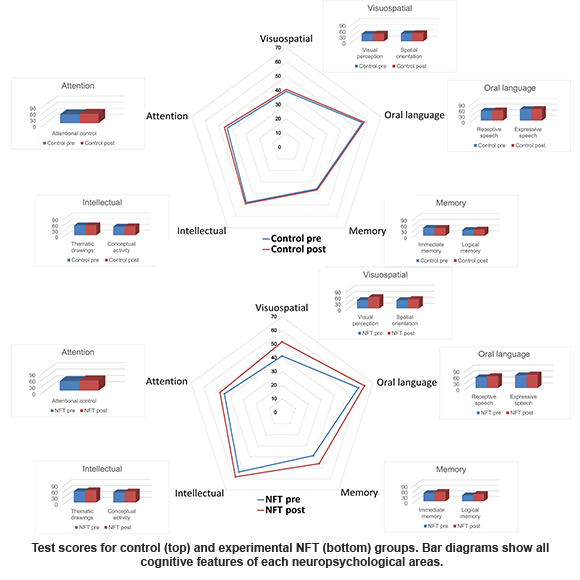
BCI tool for assistance of severely impaired people at home
A BCI tool for assisting dependent elderly people at home was developed by means of a P300-based BCI. The proposed tool allows users to manage 8 electronic devices usually present at home: TV, DVD player, Hi-Fi system, multimedia hard drive, lights, heater, fan and phone. Thus, the main comfort, communication and entertainment needs are fulfilled. The assistive BCI-based application works as follows:
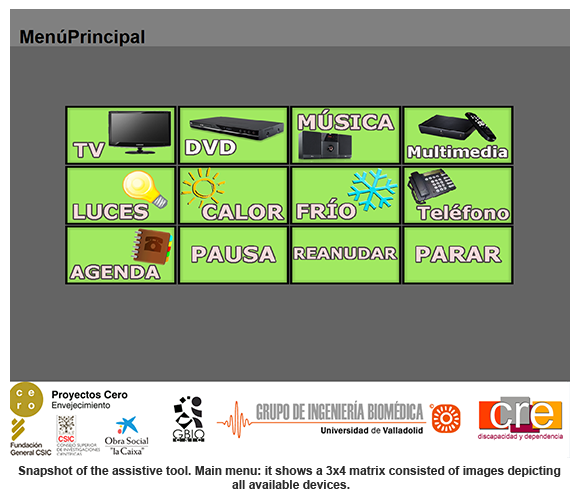
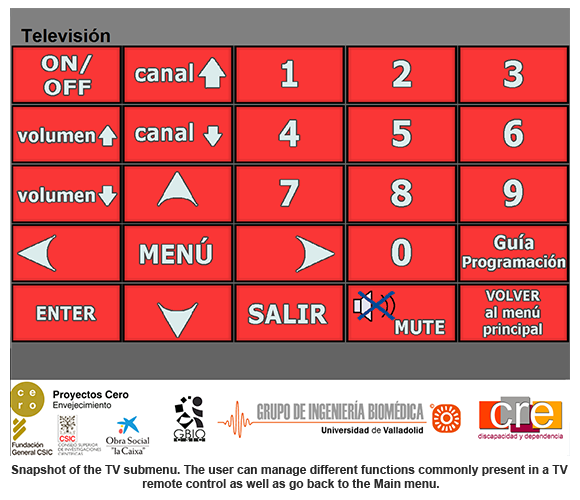


Assessment of the assistive BCI tool
Thirty people, recruited through the National Reference Centre on Disability and Dependence (CRE-DyD) from San Andrés del Rabanedo (León, Spain), participated in the assessment of the P300-based tool. All subjects (19 males, 11 females; mean age = 48.7 years, range = 26-68) performed three sessions (a first one for calibration and two evaluation sessions) and one neuropsychological evaluation by means of the Luria test. They were all potential BCI end-users since they presented motor disabilities. Moreover, they were BCI-naive (without any BCI previous experience).
Our results showed that 23 out of the 30 participants were able to properly manage the proposed tool with accuracy higher than 80%. Nineteen out of them even achieved accuracy above 95%. Moreover, the users’ performance was analysed in order to explore its relation to the Luria-AND scores achieved for each participant. Statistical significant differences were not found between the accuracy or information transfer rate (ITR) reached by the patients and the Luria scores for specific cognitive functions. Therefore, our results suggest that P300-based BCIs could be really suitable to assist severely impaired people at their own home.

If you want to obtain additional information, you can download the following document, which shows in detail the results of the BCI-Ageing project.